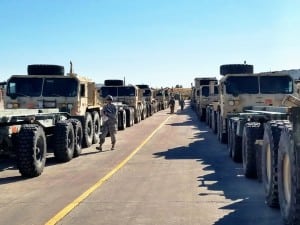The Army is aiming to install a new force general model by fiscal year 2022, which will include an effort to move toward more targeted delivery of next-generation weapon systems to required units.
Army officials detailed the new Regionally Aligned Readiness and Modernization Model (ReARMM) to reporters on Tuesday and said the service will spend the next year refining the model to create predictable six month cycles for fielding new equipment to units rather than the current system of delivering to units that happen to be available for training.

“There’s a recognition, and we’ve been looking at this the last couple of years, that we need a force generation model that affords the opportunity to continue to maintain the readiness and training while at the same time modernizing for the future force,” said Lt Gen. Charles Flynn, deputy chief of staff for the Army’s G-3/5/7. “We need time in our modernization and training cycles to make sure that our leaders understand the capabilities that they’re getting and how the doctrines and [tactics] that we’re going to use are applicable to these new capabilities.”
Flynn said ReARMM is about organizing to have “the right equipment in the right place for the right formations” as they arrive in theater, with the Army currently working through developing over 30 new signature systems for the force.
“What this affords us the ability to do is that we now know the type of unit we want to make those modernization adjustments to, we know the quantity that we can afford and then we know the time, what year and what part of the year, we can do these things,” Flynn said.
Brig. Gen. Peter Benchoff, director of G-3/7 force management, told reporters ReARMM is a shift away from the current practice for fielding new capabilities of meeting global demand first, before layering in training requirements and then finding the units that are available to train.
“That doesn’t necessarily put the most modern equipment in the right theater at the right time,” Benchoff said. “What we want to do is chart it not only in time but, to the best we can, in geography based on the threat assessment [to figure out] where we want modern formations to go. Where we put those most modern capabilities could change. Our most modern ABCTs might be one theater. Our most modern IBCTs might be in another based off that.”
Benchoff said the ReARMM model is a critical piece to enabling an embrace for future multi-domain operations and as the service looks to introduce new combat vehicles, aircraft, air and missile defense systems over the next decade.